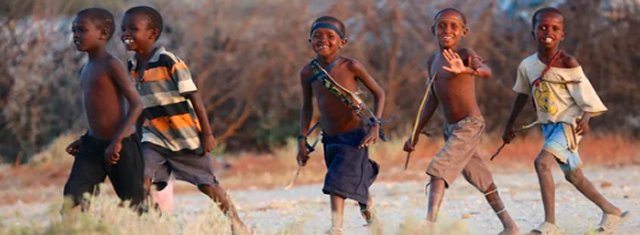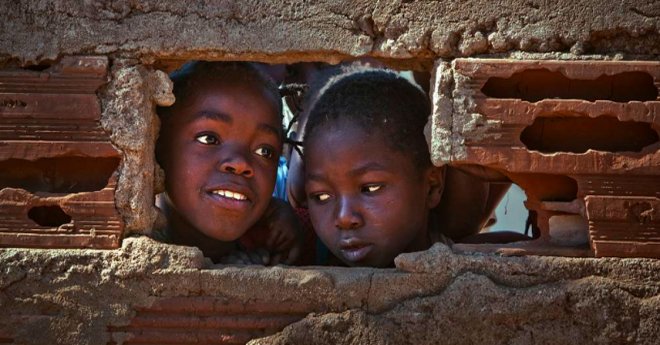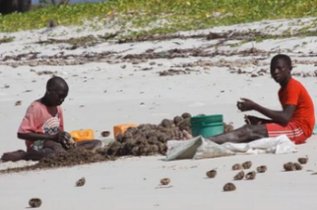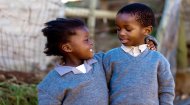|
Children in Mozambique |
Children in Mozambique |
Children in Mozambique | Children in Mozambique |
|
 |

|
The dynamics of family life in Mozambique vary depending on their location. In the north, for example, the woman is head of the household and is seen as the decision-maker with possessions cascading down her line of the family. In the south and central areas of the country, a patriarchal system operates with the eldest son becoming head of the family when a father passes away, taking responsibility for the family's well-being, although both these systems are becoming less common in urban areas. All tiers of a family are held in high regard within Mozambican families, with elders seen as 'beacons of wisdom' and supported by their adult children, while children themselves are greatly valued by all generations and are raised to respect their elders, perform household duties and care for their younger siblings. Most women in Mozambique will have 4.76 children (2023), although a fall from 6.7 in 1971. The HIV prevalence rate in Mozambique is around 12.5% among children and adults aged 15 and older, translating to approximately 2.2 million people living with HIV in 2021-2023. The rate is higher in women (15.0%) than men (9.5%), particularly among young women, and is most concentrated in the southern and coastal urban areas.
The situation is further hampered by the fact that most of the population is of Bantu extraction and neither the students nor their teachers really understand Portuguese, in which they are required to be taught. The Ministry of Education in Mozambique reports that less than half of the population finishes primary school and, of those who do finish, only 8% transition to fee-paying secondary school, where facilities are even thinner on the ground, especially in rural areas. Most children, who are around 14 years old when they reach this stage, would prefer to be at work and earn money in any event, as few see the general curriculum they are supposed to follow as relevant for the life that lies before them, which is mainly working on their parents' subsistence farms. Mozambique's adult literacy rate is around 60-61%, with a significant gender gap where women's literacy is lower than men's. The youth literacy rate (ages 15-24) is approximately 70%. Illiteracy is more prevalent in rural areas. Most children in rural Mozambique do not have access to safe water (40%), and fewer have sanitation, with a rural open defecation rate of 36%. Although this situation is improving, especially in urban areas where the safe water access rate is around 56%, Mozambique simply doesn't have the capital or resources to build and maintain new water sources, relying instead on old, unclean pumps that are often broken without staff to repair them or the spare parts for that work. Most rural children live in homes made from woven straw, while others are made from cane and woodsticks, with just 10% being constructed of bricks and concrete. A 2024 survey found that only one-fifth of rural children in Mozambique had access to electricity. In comparison, about 40% of the national population has access, highlighting the significant rural-urban divide. Health care services are scant, made worse in that many children in Mozambique do not have a birth certificate, so they find it difficult to access what limited health and education services are available. Worse, without official documentation, traffickers exploit Mozambican boys into forced labour on South African farms whilst others, to escape poverty, 'voluntarily' migrate to Eswatini to wash cars, herd livestock, and sell goods while girls are regulary exploited to work in bars, roadside clubs, overnight stopping points, and restaurants along the southern transport corridor that links Maputo with Eswatini and South Africa. The video below shows aspects of life in Mozambique, together with projects and programs supporting children in the country. |






 Education for children in Mozambique is both free and compulsory from 6 up until the age of 12yrs (with a few having first attended two years at 'jardin infantil') however books and other essentials are not, putting it beyond the reach of many poor families. Although there has been a significant increase in primary school enrollment over the past decade, it is estimated that over three million children areout of school (more girls than boys) and many who do attend are faced with teachers who have been poorly educated themselves and have to learn in run down schools without the bare essentials of desks or even chairs with many in class sizes of around 90.
Education for children in Mozambique is both free and compulsory from 6 up until the age of 12yrs (with a few having first attended two years at 'jardin infantil') however books and other essentials are not, putting it beyond the reach of many poor families. Although there has been a significant increase in primary school enrollment over the past decade, it is estimated that over three million children areout of school (more girls than boys) and many who do attend are faced with teachers who have been poorly educated themselves and have to learn in run down schools without the bare essentials of desks or even chairs with many in class sizes of around 90.


